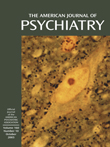Emotions in Unmedicated Patients With Schizophrenia During Evaluation With Positron Emission Tomography
Abstract
OBJECTIVE: Schizophrenia is currently conceptualized as a disease of functional neural connectivity, leading to symptoms that affect aspects of mental activity, including perception, attention, memory, and emotion. The neural substrates of its emotional components have not been extensively studied with functional neuroimaging. Previous neuroimaging studies have examined medicated patients with schizophrenia. The authors measured regional cerebral blood flow (rCBF) during performance of a task that required unmedicated patients to recognize the emotional valence of visual images and to determine whether they were pleasant or unpleasant. METHOD: The authors examined rCBF in 17 healthy volunteers and 18 schizophrenia patients who had not received antipsychotic medications for at least 3 weeks during responses to pleasant and unpleasant visual stimuli. Areas of relative increases or decreases in rCBF were measured by using the [15O]H2O method. RESULTS: When patients consciously evaluated the unpleasant images, they did not activate the phylogenetically older fear-danger recognition circuit (e.g., the amygdala) used by the healthy volunteers, although they correctly rated them as unpleasant. Likewise, the patients showed no activation in areas of the prefrontal cortex normally used to recognize the images as pleasant and were unable to recognize them as such. Areas of decreased CBF were widely distributed and comprised subcortical regions such as the thalamus and cerebellum. CONCLUSIONS: This failure of the neural systems used to support emotional attribution is consistent with pervasive problems in experiencing emotions by schizophrenia patients. The widely distributed nature of the abnormalities suggests the importance of subcortical nodes in overall dysfunctional connectivity.



